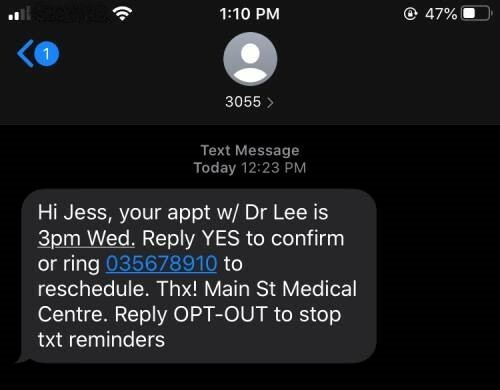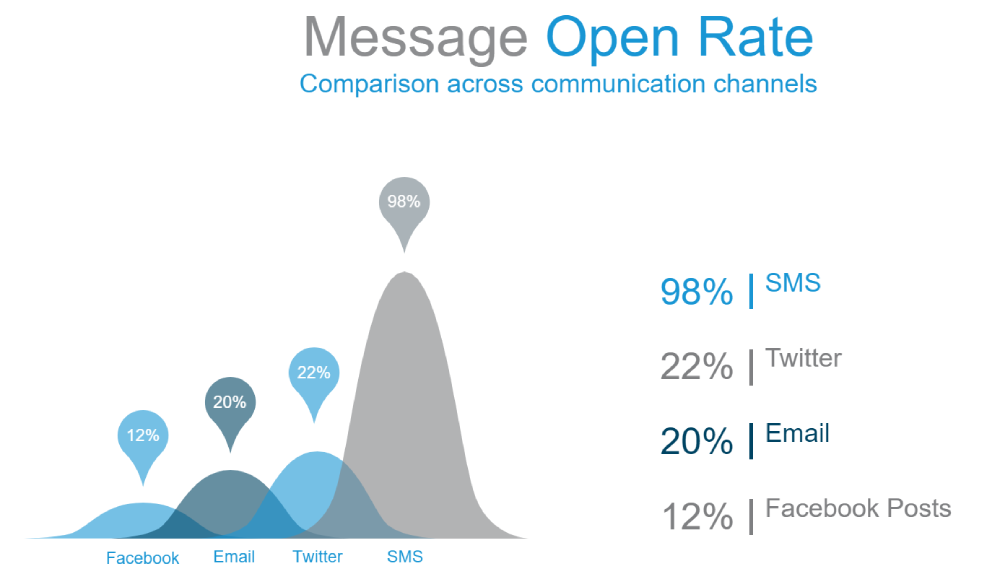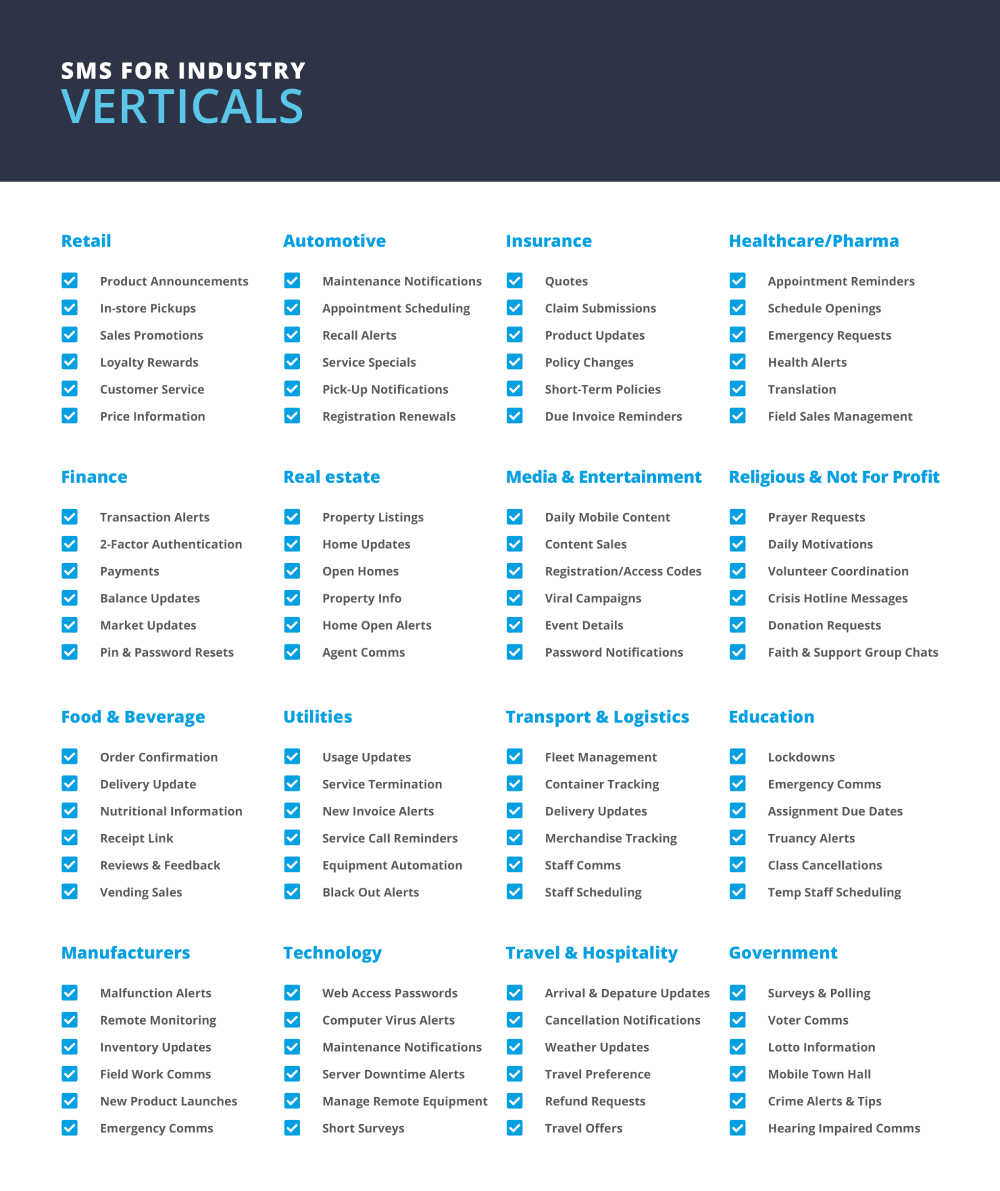Getting the Message: How Businesses Use SMS to Connect with Customers
We are busy people. Always on the go, with so much on our plates. As a small business, it can be tough to reach customers at the best of times. So how do you get through to them with all that noise? The answer is to be where they are - on their phones, that is!
Ever received a text from your dentist, reminding you of that cleaning you booked for next week? Helpful, right? That’s an iSMS!

iSMS (internet short messaging service) is a solution that allows you to send text messages to mobile phones using the internet. These can be sent in bulk, for things like all-staff memos, or individually on case-by-case basis, for things like appointment confirmations.
You can use our test gateway to try it out here!
How effective is iSMS?
There are good reasons companies across New Zealand (and the world) are using iSMS to connect with customers. Think about every time you leave the house. What do you grab? Phone, keys, wallet. You’re not alone. In fact, we have our phones on us so often that 90% of texts are read within 90 seconds; not surprising when you hear that the average person checks their phone 47 times a day!
Reaching people and having them read your message is half the battle, and often the most important part. If you’re not even reaching them, then all your effort is in vain. Check out the chart below to see how open rates for SMS compare to other methods of communication:

What industries can benefit from iSMS?
The great thing about iSMS is that it’s super versatile and can be applied across a wide range of uses. Here are some examples:
Confirm bookings or appointments
Sending an SMS message to a customer’s phone and asking them to reply to confirm is an effective way to reduce the number of no-shows and avoid lost revenue. Any business that relies on bookings can benefit, such as restaurants, salons, doctors, mechanics, veterinarians, and more.
Delivery reminders
Ever wait around all day for a package, only to find it arrives at the end of the day? Annoying, isn’t it? Freight companies and retail services can improve their customer experience by sending an iSMS to let them know when a package is close to arriving, or when an order has arrived in-store and is ready for pickup.
Service notifications
Utilities, telcos, and other consumer services can send customers texts to keep them informed about their usages, payments, outages, and maintenance undertakings in real-time.
SMS marketing
Every industry can benefit from SMS marketing, whether it’s a text sent to notify customers of a limited-time offer, a new product announcement, loyalty awards, or live events such as webinars.
Internal staff comms
SMS is also useful for any business whose employees may not always be in the same place. Texts can be sent to staff for urgent, company-wide notifications (like office closures) or to certain departments.
Check out the below table for more ideas on how SMS can be used across different industries. But remember: its uses are limited only by your own creativity!

Laws around sending SMS
As with most bulk communications or marketing materials, there are limits to what you can send, and to whom. It’s always best to check the laws in the country you are sending them in, but in general, here are some things to remember when sending SMS here in New Zealand:
-
Always obtain consent from your customers to contact them via SMS. Just as customers need to agree to receive materials via email, like newsletters, they must agree to receive SMS.
-
Always include a way for the receiver to opt out. This is the counterpart to the “unsubscribe” link in a bulk email. This must be included in every SMS. If your message is too long to include it in the original text, it can be sent in a subsequent text.
-
Some communications, such as emergency notifications or urgent messages, may be exempt from SMS spam rules. Furthermore, the rules are different for each industry. To avoid legal ramifications, be sure to always follow the rules around your specific industry and communications content.
To learn more about the NZ consent rules around SMS, click here.
Tips for using SMS:
Here are some SMS best practices to keep in mind when crafting messages.
- Keep the messages short (160 characters is the limit; overflow will send as a separate text)
- Always include the name of the sender/company (so they know who it’s coming from)
- Personalise where possible (i.e., use the customer’s name or refer to their subscription/purchase, etc.)
- Include the action you want taken (i.e. “reply YES to confirm your appointment”)
- Always include how they can contact you beyond reply text (such as an email or phone number)
- Always include an opt-out option (best to put this at the end of the message)
- Don’t over-do it! Remember, less is more. No one likes an influx of spam!
Remember the example text from earlier? You can see all instances of best practice in play:

Of course, as with any method of communication, data is king. To be able to effectively use iSMS, make sure you’re collecting your customers’ mobile numbers, saving them correctly, associating them with the correct contact details, and gaining permission to contact them via text.
SMS pricing and plans
As far as cost goes, iSMS is a relatively low-cost solution that can scale to your business needs. Price can vary based on providers, with plans starting as low as $10/month! You can get an idea of pricing and plans here.
One of our iSMS experts can work with you to determine whether your business would fall under low-volume or high-volume usage to find the right plan for you.
Putting it into practice
From engaging with external customers and keeping in touch with our wholesale partners to connecting staff across the country, we’ve implemented iSMS at Voyager for a wide range of uses. Get an inside peek at how we use it by clicking here.
Making it work for you
If you’re keen to hear more about what iSMS can do for you and your business, contact the experts at Voyager on 0800 4 SPEED or at [email protected].
For a more in-depth introduction, you can also check out our webinar on iSMS here
